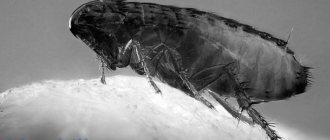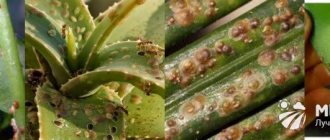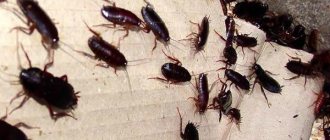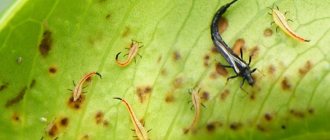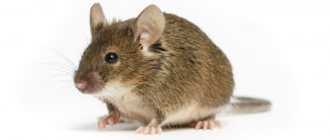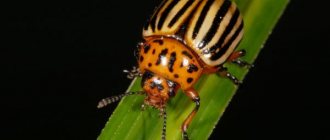The Moth family is represented by a huge number of species of small butterflies. Cultivated plants are constantly under attack by pests. The most common pest on earth is the moth. Moths are a type of moth that are rightfully considered a dangerous pest. There are many types of moths and they all have their own characteristics and taste preferences. How to fight this pest and protect the crop from destruction?
Ognevki - a big family
Moths belong to the Lepidoptera family. There are 6,000 species of these butterflies on earth. And almost all of them are considered pests to one degree or another. Some of the moths harm plants, others are the most terrible parasite that destroys bee colonies.
Most moths are butterflies that fly in the evenings or at night
The moth can be found in all corners of the earth - both in warm and cold climates. Hundreds of species of moths live in Russia. But only some of them pose a particular danger to agriculture.
The lifespan of a butterfly is 3 months. Each moth lays up to hundreds of eggs per season.
Gooseberry
The gooseberry moth is a harmful and dangerous pest of gooseberries and currants. Insects spend the winter in the ground in the state of pupae. With the arrival of warm days, moth butterflies emerge from them and lay eggs in flower buds. The hatched moth caterpillars feed on the pulp and seeds of the resulting fruits. Having thus destroyed the first ovary, the caterpillars crawl through a hole gnawed on the side onto a nearby growing berry. After 5-6 days, using a similar method, the caterpillars move to the next berry, entangling the bunch with a thin web.
Harm
The majority of moth species are considered particularly dangerous pests. They are notable for the fact that they colonize granaries, food warehouses, elevators and destroy stocks of fruit crops, grains, and cereals.
Moths are dangerous pests of food products and also destroy crops of fruit and agricultural plants.
A number of moths settle in warehouses and infect confectionery products, flour, and dried fruits. Having settled in shops and warehouses, moths can cause multimillion-dollar losses. Therefore, at the first sign of the appearance of a moth, it is necessary to take all measures to destroy it.
The harmfulness of the larvae
In the case of moths, the main pests are caterpillars. The larvae, as soon as they are born, immediately begin to eat. They need food, firstly, in order to accumulate the necessary amount of building material to transform into a butterfly inside the cocoon, and secondly, to deposit enough nutrients to survive at the adult stage.
Depending on what species the moth is, the pest affects:
- grocery products (flour, nuts, cereals, pasta, cereals, confectionery);
- cereal crops and grain collected for storage;
- garden and vegetable crops;
- wax honeycombs, honey, bee bread;
- various types of trees.
As the number of larvae constantly increases, they cause quite serious damage.
Mill fire
It arrived in Russia from India and spread everywhere. Mainly settles in mills, flour mills, bakeries and other places where grain is processed. Feeds:
- flour products,
- grain,
- cereal,
- pasta,
- dried fruits,
- mushrooms,
- nuts,
- confectionery products.
The mill moth reaches a size of 14 mm and has dark gray wings with dots and stripes. The moth lives 20 days, during which it is capable of laying 200 eggs. The butterfly can live in warm warehouses all year round. 7 generations of pests are hatched per year.
Adult millet moth
The moth not only destroys the grain, but also pollutes it with the products of its vital activity and the cobwebs it produces. We advise you to read the article about methods of combating chestnut leaf miner.
Description and life cycle
An adult moth is a butterfly with a wingspan from 1 to 4.5 cm (depending on the species). Some tropical moths grow much larger, with a wingspan reaching 8 - 8.5 cm. Butterflies have a thin body, long legs, and two pairs of wings. The upper wings are narrow, in the form of an elongated triangle. The lower ones are wide, rounded, with fringe along the edge. The head has bulging eyes, antennae and a mouth organ in the form of a proboscis. The proboscis in many species is shortened, and in some it is not at all. Adults do not feed, and their vital activity is supported by substances accumulated during the larval stage.
The vast majority of moths are inconspicuously colored in all shades of gray or brown. These species are mainly active at dusk and in the dark. But there are also brightly colored moths. They are not afraid of sunlight and fly during the day.
Appearance of a mill fire
The life cycle of the true moth consists of 4 stages. After mating, the female lays eggs. After 7–10 days, larvae emerge from the eggs. The caterpillars, which look like small light worms, are actively feeding and growing. After 10–35 days, the larva sinks into the soil, where it pupates. The development of a butterfly inside a pupa usually takes from 10 to 25 days, but some species overwinter in a cocoon and emerge when the weather warms. An adult butterfly lives 1 – 3 weeks. During this time, the female manages to lay from 70 to 150 (sometimes up to 200) eggs.
Southern barn moth
Just like the miller moth, it prefers to destroy grain, confectionery, nuts, and dried fruits. Most often found in the southern regions of the country.
The moth is small in size - 7-9 mm - and is distinguished by a dirty white-yellow color with a dark pattern on the wings. Butterflies live for two weeks.
Moths clog grains and produce with the web tubes they create. They pose a particular danger to granaries, where they destroy seed embryos. As a result, seed germination is lost.
The southern granary moth lives in granaries, mills, elevators, etc. (in the upper layers of the embankment at a depth of 15 cm)
The moth is afraid of low temperatures and dies already at a temperature of +14 degrees. Therefore, one of the ways to successfully combat it is to store food and grain at temperatures below 14 degrees.
Wax
The wax moth is known to a wide range of beekeepers. Its caterpillars are a dangerous pest of honeycombs. They damage not only honeycombs, but also honey, brood and bee bread. As a result, the frames and insulation of the hives are damaged, and this in turn leads to the death of bee colonies.
Moth moth
Interesting!
However, the insect also has a positive side: since ancient times, moth caterpillars have been used in folk medicine to prepare medicinal tinctures. This drug has antiviral and antibacterial effects, improves metabolism, strengthens the immune and nervous systems.
Flour moth
It is distributed almost everywhere and affects granaries, warehouses, confectionery factories, shops, and flour mills.
Female flour moth
Like all the other types of moths listed above, it feeds on grain, cereals, seeds, and confectionery.
The size of the flour moth is quite large - the wings reach a size of 12-30 mm. The color of the wings is light brown with a dark pattern.
Preventive measures
For the purpose of prevention and pest control, it is recommended to regularly inspect the bushes of berry crops for the presence of moths.
This method will help to begin the extermination of insects in time and protect the untouched crop from the invasion of the moth. It is also necessary to monitor other growing plantings that are located near gooseberries, currants and raspberries. Understanding the specific life functions of moths and natural phenomena will help the gardener destroy parasites. For example, in a very hot and dry summer, the moths themselves die when they do not have time to hide in the top layer of soil.
The “pink muscordine” mushroom, which appears on bushes, also contributes to the extermination of these pests. It appears in the spring when precipitation is heavy. This mushroom has a negative effect on moths.
To prevent moths from appearing on the bushes, it is recommended to provide them with good lighting and normal air circulation. It is necessary to periodically thin out the bushes so that they are not dense. When autumn comes, experts advise cleaning around the bushes - clearing the soil of fallen leaves and other debris.
In addition, to protect the bushes from insects, you can hang feeders on the trees next to the gooseberries in winter. Hungry birds will feed on grains and seeds and will most likely build nests near or on the site in the spring. This way in the spring they will exterminate moths and other pests.
Field moth
This type of moth is found everywhere, but the most numerous and most harmful in woodlands and forest-steppe
It is a pest of fields. Prefers crops:
- radishes;
- cabbage;
- beets;
- horseradish;
- celery;
- spinach;
- rapeseed
This is a fairly large butterfly measuring 24 mm and yellow-brown in color. The main damage is caused by moth caterpillars that eat the leaves of cultivated plants. The main sign of damage to the field moth is holes in the leaves.
Plowing the soil before sowing and in the fall, destroying weeds and regularly loosening the soil helps protect crops from the field moth.
Traditional methods
For a long time now, gardeners have not only been breeding, growing and harvesting berries, but also inventing and coming up with various remedies against the gooseberry moth. Practical developments in this matter are passed on from mouth to mouth and include many different simple and effective methods that are safe for shrubs, humans and pets:
-
Mustard infusion.
Stir 100 grams of mustard in 10 liters of running water and infuse the resulting mixture directly for 2 days. Next, the solution is filtered and diluted again in water, twice its volume. - Spruce and pine.
200 grams of pine and spruce needles are poured with 2 liters of ordinary water. Next, the composition is tightly closed and allowed to brew for 7 days, stirring every day. Then the mass is filtered and diluted in water in a ratio of 1 to 10. The resulting product is sprayed on the plants once a week and during the entire flowering period. - Tomato tops.
1 kilogram of tomato tops is left to soak in 10 liters of water for the whole night. Next, the solution is filtered and the bushes are sprayed once a day. - Wood ash and soap.
1 kilogram of wood ash is infused in 10 liters of water for about a week. The resulting liquid is filtered well and grated soap is added directly to it. This is necessary so that the liquid sticks to the gooseberry leaves. The composition is sprayed on berry bushes at the moment when ovaries begin to form on them. - Elder.
Stir 100 grams of elderberry powder in 1 liter of water and infuse it. After 2 days, the product is filtered. Gooseberries are treated with it in the evening, when the moths are most active. To treat the bushes, 200 ml of infusion is diluted in 800 ml of cold water. Also, the gooseberry moth can be scared away from the bushes by simply sticking an elderberry branch into them. - Pharmaceutical chamomile.
100 grams of dry chamomile is poured into a bucket of hot water. The mixture is infused for 48 hours and the bushes are sprayed with it 4 days after all the flowers have fully bloomed. Instead of chamomile, you can use onion, yarrow herb or tansy. - Tobacco.
400 grams of tobacco or shag should be soaked in a bucket of water and left for 2 days. Then the resulting solution is diluted in 10 liters of clean water and the bushes are sprayed with the product during the flowering period approximately once every 7 days.
Regardless of the chosen product, treatment of bushes against moth must be carried out directly at a strictly specific time. It is better to do this either early in the morning or late in the evening. This way you will protect the leaves of the plant from sunburn.
Cruciferous scorched moth
Adult cruciferous scorched moth
This moth prefers to attack cruciferous plants:
- radish;
- cabbage;
- rape;
- turnip.
These are light yellow butterflies measuring almost 20-28 mm. The butterflies emerge twice during the summer; at the end of August, the caterpillars burrow into the ground for the winter.
To successfully fight the moth, you need to dig up the ground in the fall and destroy weeds that are a natural wintering site.
Pest prevention
You can prevent the appearance of moths in different ways. If we are talking about species that settle in the house and spoil food, for example, southern barn or dried fruit, then the following measures will help:
- ventilate the room as often as possible and clean regularly;
- periodically check supplies for the presence of larvae;
- Store food correctly, observe temperature and humidity conditions.
If we are talking about species that harm garden or garden crops, then they are protected from pests as follows:
- after harvesting, all debris, weeds, plant debris are removed from the site, and the soil is dug up;
- 7 – 10 days before planting, the soil is treated with a weak solution of potassium permanganate;
- During the planting season, it is necessary to regularly weed and loosen.
Next to the beds you can plant plants that repel moths - lavender, wormwood, mint. The same can be done in the apiary to protect the hives from wax moths.
Destruction
To destroy moths, spraying with insecticides, irradiation with insecticidal lamps and fumigation are used.
In small farms, spraying with solutions of tobacco and wormwood is used.
An effective remedy for fireweed
If the moth gets into the house and settles in the products in the kitchen, destroying them, then you can use Raptor traps, insecticidal plants - laurel, lavender, geranium, citrus peel, wormwood. All cabinets should be washed with a solution of vinegar and wormwood and lavender should be placed in them. This will scare away the moth.
The fire damages both large farms and small kitchens, destroying food supplies and turning them into dust. Therefore, it is necessary to fight it regularly, leaving the butterflies no chance of survival.
Control measures
The basic rule of combating any type of moth is to detect it in a timely manner and correctly identify it. There are 3 main ways to destroy harmful insects:
- chemical;
- mechanical;
- biological.
Treatment with insecticides is the most effective, but also the most undesirable method. Chemicals will indeed quickly destroy butterflies and larvae, but they can also harm beneficial insects, and in addition, after using toxic drugs, it is not always possible to eat crops and products. Also, not everyone is ready to use toxic substances at home. Therefore, insecticides are recommended for use in cases of severe infestation or when other means have failed.
The mechanical method is absolutely safe, but requires a lot of time and patience. You need to manually collect and destroy caterpillars and butterflies.
The biological method allows you to get rid of moths both with the help of biological products and with the involvement of natural enemies of these pests. Among them are birds, lizards, frogs, and some types of predatory insects. You can also use folk remedies.
To get rid of pests as quickly as possible, several methods are combined.
Genetics[ | code]
The mill moth is a model species used to study problems in phenogenetics, molecular genetics, cytogenetics and developmental biology. The karyotype consists of 30 pairs of chromosomes. Gender is determined by the ZW system. The mitochondrial genome is a circular strand of DNA consisting of 15,327 nucleotide pairs and contains 37 genes, of which 13 genes encode protein, two are rRNA and 22 are tRNA. About 0.7% of the DNA on the W chromosome is of mitochondrial origin, and 83% of the mitogenome sequence is present on the W chromosome.
Numerous variations in the mill moth's eye color caused by mutations have been described. Analysis of eye color mutations in Ephestia kuehniella
provided the first evidence for the "one gene, one enzyme" theory in classical genetics.
Some types [ | ]
In forestry they are important: spruce cone moth - Dioryctrica abieteila WV (sylverstrella Rtz.), a butterfly up to 30 mm in span, gray, fore wings with dark and white transverse, jagged stripes and with a white spot near the middle; caterpillar up to 20 mm long, dirty-reddish, with a brown head and occipital shield and with dark oblong stripes on the back and sides. At the end of June and in July, the butterfly lays eggs on spruce cones; caterpillars feed on immature seeds and scales. By the end of summer, the cones in damaged areas turn brown, fall off in September, the caterpillars emerge from them and cocoon in the soil cover for the winter, pupating in the spring. Less common in pine cones; Finally, they also develop in galls produced by Chermes on spruce and in painful thickenings of the bark from the fungus Pieridermium pini corticola, on pine - in whorls. The latter are described as a special variety - sylvestrella Rtzb. , or splendidella Hr. Sch. ; they pupate in the bark. Stenoptycha terebrella Zck lives in fir cones. , occasionally the previous one comes across; More often, caterpillars similar to them Retinia (Redweed) settle here. Zinkiella (Euzophera) pinguis Hw. develops in the bark of young ash trees. ; The caterpillars feed on layers of oak and sapwood. Finally, the seeds of white acacia (Robiniapseudoacacia) are eaten by the caterpillar Etiella Zinkenella Tr. , widespread in almost all forest districts of southern Russia, in other years it destroys crops everywhere; also little studied
In beekeeping, bloodworms and moths attract attention - the caterpillars of Galleria melonella L. (cereana L.) and Achroe agrisella Fbr. (alvearia L.)
The most famous in households are: flour moth - Asopia farinalis L., with a spread of up to 27 mm, violet-brown, with an ocher-yellow head; the fore wings near the middle are ocher-yellow, with two transverse white lines, of which the back one is strongly sinuous; both continue onto the hind wings; The 4th and 5th veins begin with a common stalk; the fringe has all the wings white, with dark spots; the hind wings are gray, their 8th vein is free. The caterpillar is yellow, grayish at both ends, with a red-brown head and occipital and caudal scutes. Lives in reserves of mealy substances, produces two generations per year, pupates in May, flies in June and July; found not only in Europe and Asia, but in North America, Brazil, Africa and the Tahiti Islands. Another species, Asopia costalis Fbr, lives together with it. In reserves of fatty substances, such as lard and oil, Aglossa pinguinalis L. is usually found - the female is up to 4 cm in span, the male is up to 2 1/2; without a proboscis, the labial tentacles are protruding, their last segment is bare, the maxillary tentacles are thread-like; shiny, brownish-gray color, the front wings with two black jagged stripes, yellowish on the outer sides and with a dark spot in the middle, the hind wings are light gray. Caterpillar up to 28 mm long, 16-legged, dirty-brown, head and occipital shield reddish-brown; On the sides of the body there is a deep fold of skin in which the breathing holes are hidden. They feed on fat, skin, pigeon droppings, and corpses; These same caterpillars were found in the vomit of people who apparently ingested them with food. Butterflies fly from late June to August. In seed warehouses, most often pine seeds, but also in dried fruits and hay dust, caterpillars of Ephestia elutella Hbn appear. ; butterfly up to 17 mm in span, on the front wings instead of the 7th, 8th and 9th veins there is only one, the 4th and 5th veins on all wings also merge, and the 7th and 8th on rear; the fore wings are brownish-gray, reddish at the inner edge, with two light gray, slightly sinuous transverse stripes and inconspicuous median points; the hind wings are light gray, almost white in males. Caterpillar up to 11 mm long, yellowish-white, with a yellow-brown head and occipital shield and with rows of the same warts along the back; the tail shield is darker. Flight of butterflies in July. Caterpillars are especially harmful in granaries, where they eat away seeds.
Reconnaissance surveillance
carried out once every 5-7 years at the end of the growing season (in August-September) on the entire area of forest seed plots with fruiting not lower than three points on the Kapper scale. A characteristic sign of cones being infested with the moth is the presence of pest excrement, held together by cobwebs, on their surface.
carried out only in plantings where seed procurement is planned for the current or next year. Supervision is carried out in two periods: in June and in August. When deciding on the need to carry out protective measures, special supervision (operational survey) is carried out in the second half of September, during which the parameters of the state of the pest population and the forecast for fruiting for the next year are clarified.

